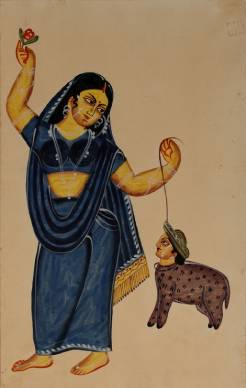Kalighat Painting
ABOUT THE KALIGHAT PAINTING Kalighat painting, Kalighat Patachitra or Kalighat Pat (Bengali: Kalighat Patachitra) is a style of Indian painting that originated in the 19th century. It was first practiced by a group of specialized scroll painters known as patuas in the vicinity of the Kalighat Kali Temple in Kolkata (formerly Calcutta), in the present-day Indian state of West Bengal. Comprised of bold outlines, vibrant color tones, and minimal background details, these paintings and drawings were done on both handmade and machine-made paper. The paintings depicted mythological stories, figures of Hindu gods and goddesses, as well as scenes of daily life and society, thus recording a socio-cultural landscape that was undergoing a series of transitions during the 19th and early 20th centuries, when the Kalighat pat reached its peak. pinnacle. The appeal of patuas lies in their simplicity. Soft, spontaneous lines and flat colors characterise these scrolling paintings. They maintain the Indian spirit of conveying the essence of the scene or characters depicted, rather than depending on how the eye perceives reality. Today, the Victoria and Albert Museum in London houses the world's largest collection of Kalighat paintings, with 645 paintings including watercolors, line drawings, and hand-painted lithographs.





